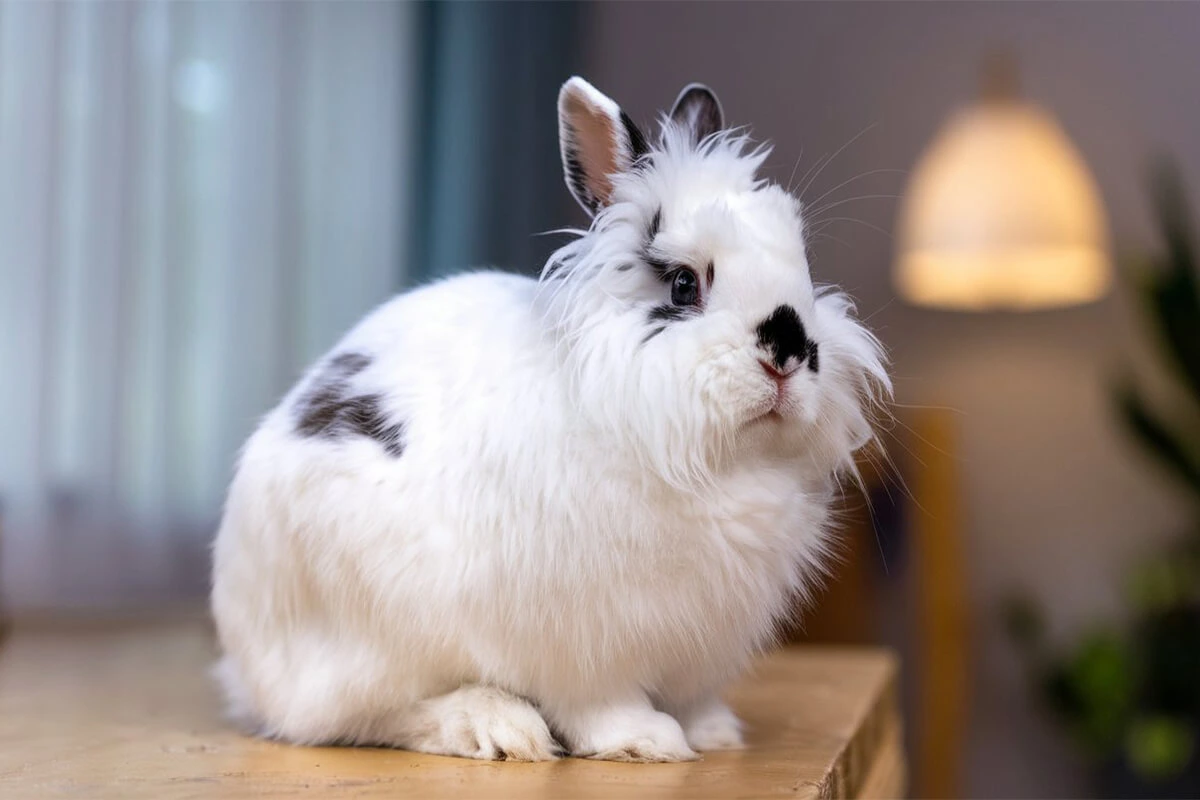English Angora Rabbit Price has been steadily rising as more people show interest in these fluffy, long-haired rabbits. Whether as pets, show animals, or valuable wool producers, English Angora rabbits attract buyers willing to pay a premium. As demand increases, so do the costs associated with owning and caring for them.
Several factors contribute to this price surge. The value of their wool, the expenses of grooming and veterinary care, and the cost of feeding and housing all play a role. Reputable breeders also influence pricing, as they charge more for well-bred, healthy rabbits. Limited availability further drives up demand, making these rabbits even more expensive.
Understanding these factors is crucial for anyone considering buying an English Angora rabbit. Whether you want one as a pet or for wool production, knowing what affects their price will help you make an informed decision. This article breaks down the top five reasons why English Angora rabbit prices continue to rise.
Increased Demand for English Angora Rabbits
Growing Popularity as Pets and Show Animals
More people are choosing English Angora rabbits as pets because of their unique appearance and affectionate nature. Their soft, fluffy coats make them stand out from other pet rabbits, attracting owners who want an eye-catching and luxurious companion. Many rabbit enthusiasts also love their gentle temperament and enjoy bonding with them through daily grooming.
Beyond pet ownership, English Angora rabbits dominate the show circuit. Their wool quality, body structure, and overall grooming excellence play a crucial role in competitions. Owners spend time and money ensuring their rabbits meet high show standards, further increasing the demand. As more people seek show-quality rabbits, English Angora Rabbit Price continues to rise.
Rising Interest from Rabbit Breeders and Enthusiasts
Dedicated breeders and rabbit enthusiasts recognize the value of English Angora rabbits for both breeding programs and wool production. Ethical breeders carefully select breeding pairs to improve wool texture, health, and temperament, which requires time, expertise, and financial investment. Since well-bred rabbits fetch higher prices, breeders adjust their costs to reflect the quality and rarity of their stock.
Enthusiasts who specialize in Angora wool production also drive up demand. They seek rabbits with the densest and softest coats, often paying premium prices for the best genetic lines. As more people get involved in breeding and raising these rabbits, the competition for high-quality English Angoras increases, pushing prices higher.
High Demand for Rare Rabbit Breeds, Affecting Pricing
English Angora rabbits fall into the category of rare and specialty breeds, which naturally increases their value. Unlike common pet rabbits, they require specific breeding conditions, meticulous care, and regular maintenance. Their rarity makes them highly sought after, particularly by those who appreciate their wool-producing capabilities or enjoy owning an exotic breed.
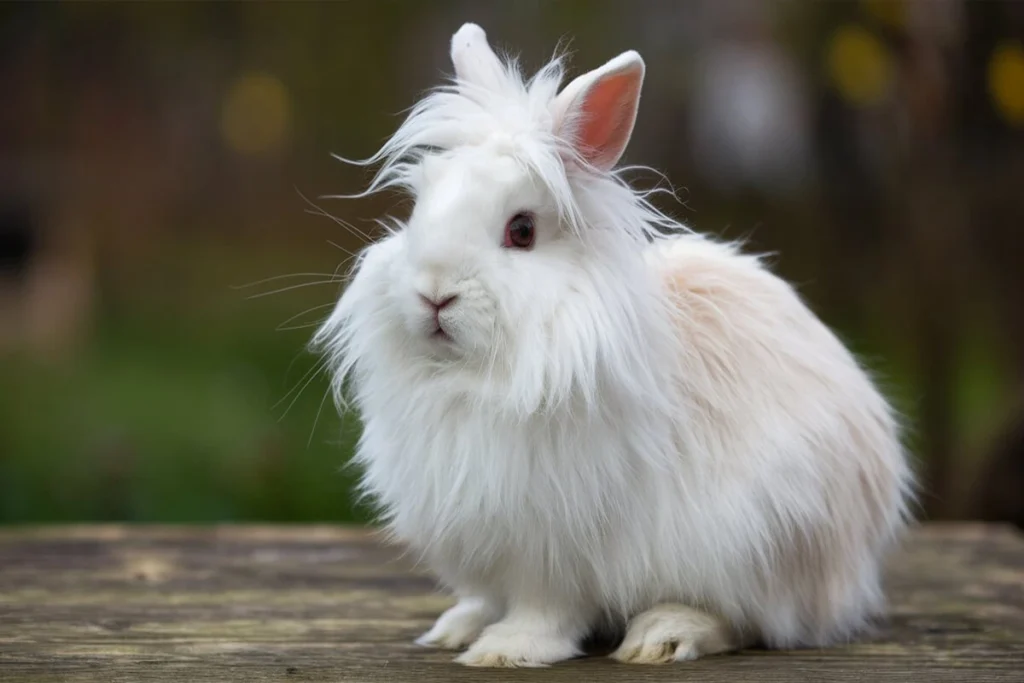
When demand for rare rabbits rises, prices follow. Limited supply and the specialized care required to maintain these rabbits make them more expensive than standard pet breeds. As more people recognize the beauty and value of English Angora rabbits, their price continues to climb in both pet and breeder markets.
The Value of Angora Rabbit Wool
High-Quality Wool Production and Its Market Value
English Angora rabbits produce some of the finest and softest wool in the world, making them highly valuable to fiber enthusiasts and textile producers. Their wool, known as Angora fiber, is prized for its warmth, lightweight feel, and luxurious texture. Compared to other animal fibers like sheep’s wool or alpaca, Angora wool offers superior insulation while remaining incredibly soft.
Producing high-quality Angora wool requires consistent grooming and proper nutrition. Rabbit owners must maintain a clean and tangle-free coat to ensure the wool remains in top condition. Regular harvesting, either through plucking or shearing, provides a steady supply of fiber, but this process takes time and effort. Since English Angora rabbits need meticulous care to produce premium wool, their price reflects the labor and resources required.
Demand for Angora Wool in the Textile Industry
The fashion and textile industries have increased their demand for Angora wool due to its unmatched softness and warmth. Luxury brands and independent artisans alike use Angora fiber to create high-end sweaters, scarves, and other garments. Hand-spinners and fiber artists also seek out English Angora wool to craft unique, handmade textiles.
As sustainable and ethically sourced fibers become more popular, responsibly harvested Angora wool gains even more value. Buyers willing to pay for cruelty-free wool production look for breeders who ensure the rabbits remain healthy and stress-free during fiber collection. Since ethical wool production requires time and care, English Angora Rabbit Price continues to rise to match the increasing demand.
The Impact of Wool Quality on English Angora Rabbit Price
Not all Angora wool is the same, and buyers recognize the difference between average and top-tier fiber. The finest English Angora rabbits produce wool with a silky texture, minimal shedding, and strong fibers that spin well. Rabbits with dense, long coats command higher prices because they yield more usable wool per harvest.
Breeders who specialize in wool production carefully select rabbits with superior fiber genetics. When a rabbit consistently produces high-quality wool, its price increases, and so does the cost of its offspring. Buyers looking for the best wool-producing rabbits must pay a premium, further driving up the overall market price for English Angora rabbits.
As the demand for Angora wool continues to grow, so does the value of the rabbits that produce it. Whether for commercial fiber production or personal use, high-quality wool remains one of the key reasons why English Angora Rabbit Price keeps increasing.
Rising Rabbit Grooming & Veterinary Costs
Regular Grooming Requirements for Fluffy Rabbits
English Angora rabbits require frequent grooming to keep their long, dense fur in top condition. Their wool easily mats and tangles if left unattended, leading to discomfort and potential health issues. Rabbit owners must brush their pets at least three to four times a week to prevent knots and remove loose fibers. Some owners even groom their rabbits daily to maintain the softness and quality of the coat.
Professional grooming services offer another solution for those who struggle with the upkeep. Many rabbit owners take their English Angoras to professional groomers for trimming, detangling, and overall coat care. These services, while effective, add to the overall cost of ownership. Since proper grooming plays a crucial role in a rabbit’s health and comfort, the expenses associated with maintenance drive up the overall English Angora Rabbit Price.
Increased Veterinary Costs for Specialized Care
Veterinary care for English Angora rabbits costs more than for short-haired rabbit breeds. Their thick wool makes them prone to overheating, which requires owners to monitor their environment carefully. Additionally, wool block—a condition where a rabbit ingests too much fur while grooming—poses a significant health risk. Unlike other animals, rabbits cannot vomit, so wool block can cause life-threatening digestive issues. Regular vet checkups help prevent and treat these problems, but they come at a higher price.
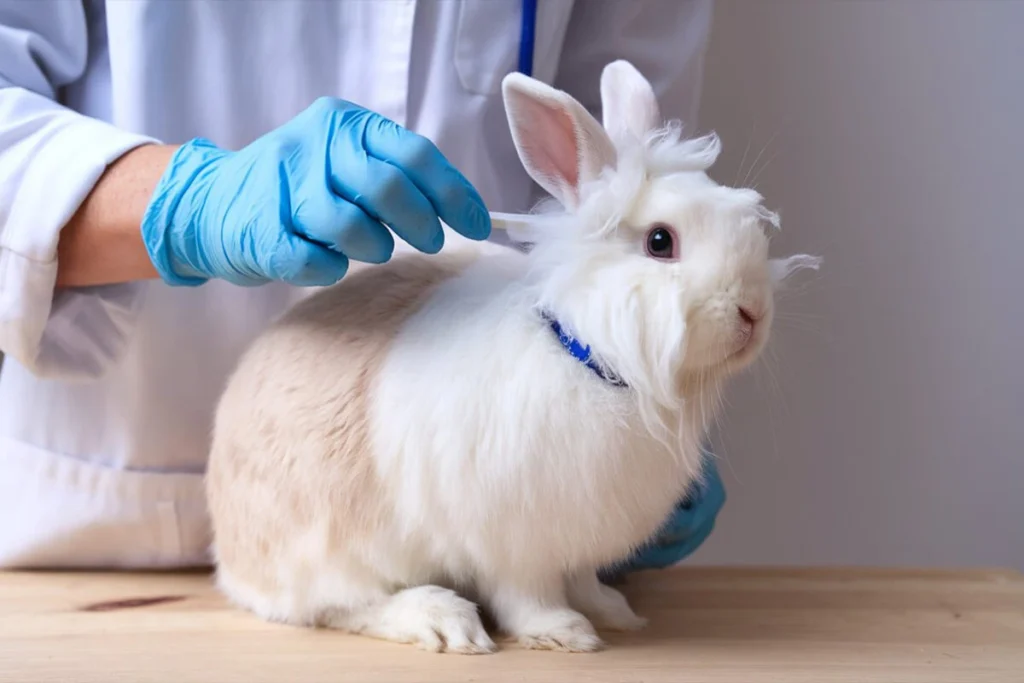
Finding an experienced rabbit-savvy veterinarian also presents a challenge. Not all vets specialize in exotic pets, and those who do often charge higher fees. Spaying and neutering procedures, dental care, and emergency treatments for wool block or infections add to the overall cost of owning an English Angora rabbit. Since these rabbits require specialized veterinary attention, their price continues to rise as owners factor in long-term healthcare costs.
Maintenance Expenses Compared to Other Pet Rabbits
Owning an English Angora rabbit costs significantly more than caring for a standard short-haired pet rabbit. Their wool-producing nature adds expenses in grooming tools, specialized diets, and appropriate housing setups. Unlike short-haired breeds, English Angoras benefit from high-fiber diets to reduce the risk of wool block, meaning owners must invest in premium hay and digestive-supporting foods.
Housing also requires more consideration. Owners must provide clean, spacious enclosures with proper ventilation to prevent overheating and wool contamination. Unlike regular rabbit breeds that can thrive in simpler setups, English Angoras need extra bedding, cooling systems, and designated grooming areas. These additional costs make them one of the most expensive rabbit breeds to maintain, directly influencing their market price.
As more people recognize the long-term commitment required for an English Angora rabbit, demand for well-bred, healthy rabbits rises. The increasing cost of care and maintenance plays a major role in why English Angora Rabbit Price continues to climb.
Feeding & Housing Expenses
Nutritional Needs and Feeding Expenses for Angora Rabbits
English Angora rabbits require a specialized diet to maintain their health and support their wool production. Their high-fiber nutritional needs make premium-quality hay, such as Timothy or Orchard grass, an essential part of their diet. Owners must provide a constant supply of fresh hay to keep their digestive system functioning properly and prevent wool block, a dangerous condition caused by ingesting loose fur.
Beyond hay, these rabbits need high-quality pellets rich in protein to support continuous wool growth. Unlike short-haired rabbit breeds, English Angoras expend more energy producing thick, soft coats, which means they need nutrient-dense food. Fresh vegetables like dark leafy greens add variety and essential vitamins, but they also increase feeding costs. Since wool-producing rabbits require a carefully balanced diet, the overall feeding expenses add up, influencing the rising English Angora Rabbit Price.
Proper Housing Requirements and Their Impact on Costs
English Angora rabbits need more than just a basic hutch or cage. Their long fur makes them prone to overheating, so owners must provide a well-ventilated, temperature-controlled environment. Proper housing setups include spacious enclosures with cooling systems such as fans or air conditioning, especially in warmer climates. These additional climate control measures increase ownership costs.
Bedding also plays a crucial role in keeping their wool clean and tangle-free. Unlike short-haired rabbits, English Angoras require soft, non-dusty bedding like fleece liners or paper-based litter to avoid matting their fur. Owners who use cheap or unsuitable bedding often struggle with wool contamination, leading to increased grooming and maintenance costs. Investing in high-quality housing materials adds another expense to rabbit care, directly impacting their overall price in the pet market.
How Pet Marketplace Pricing Fluctuates Based on These Factors
The rising cost of feeding and housing English Angora rabbits affects how breeders and sellers price them in the pet marketplace. Breeders who invest in superior nutrition and housing for their rabbits charge higher prices to cover their expenses. Buyers looking for well-cared-for rabbits must pay a premium, as reputable breeders include the cost of proper care in their pricing.
Supply and demand also play a key role in price fluctuations. When fewer breeders produce high-quality English Angora rabbits, prices rise due to limited availability. Seasonal variations in feed costs, changes in wool demand, and increasing veterinary expenses further contribute to market price changes. As more people recognize the true cost of maintaining an English Angora rabbit, prices continue to climb, making them one of the more expensive pet rabbit breeds.
Limited Availability & Breeder Pricing
The Role of Reputable English Angora Rabbit Breeders
Reputable breeders play a significant role in determining English Angora Rabbit Price. Unlike backyard breeders or mass-breeding operations, responsible breeders focus on maintaining high-quality bloodlines, prioritizing health, temperament, and wool production. They carefully select breeding pairs based on genetic traits, ensuring that the offspring inherit desirable qualities such as dense, soft wool and a strong immune system.
Ethical breeders also invest time and resources into proper socialization. They handle young rabbits frequently, exposing them to human interaction and a variety of environments to ensure they grow into well-adjusted pets. This early care makes English Angoras more comfortable around people, increasing their value in the pet marketplace.
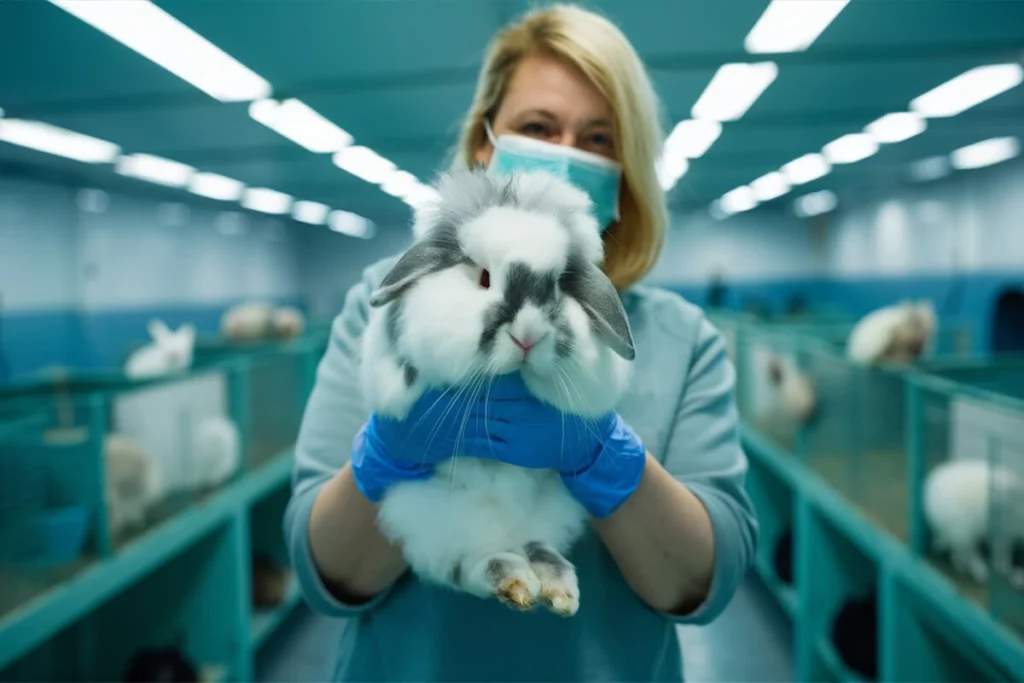
Since reputable breeders provide superior care, their rabbits come with higher price tags. Buyers who want a well-bred English Angora with a known lineage, good health, and proper documentation must pay more. These breeders often have waitlists due to high demand, which further drives up prices. As more people seek high-quality English Angora rabbits from trusted sources, the market price continues to climb.
How Breeding Challenges and Genetics Affect Price
Breeding English Angora rabbits presents unique challenges that directly impact their cost. These rabbits require precise genetic selection to maintain their luxurious wool while ensuring their health remains stable. Breeders must avoid genetic defects, such as malocclusion (misaligned teeth) or weak immune systems, which can occur when breeding lines are not carefully managed.
Producing top-quality English Angoras takes generations of selective breeding, making the process time-consuming and expensive. Rabbits with superior wool density and texture require years of refinement, meaning breeders must dedicate resources to improving each generation. The best breeding stock often comes from champion bloodlines, where the parents have won awards in rabbit shows for their wool quality and body structure. Rabbits from these elite lines cost significantly more, as they are more likely to produce high-value offspring.
Additionally, female English Angora rabbits do not always produce large litters. Smaller litter sizes mean fewer rabbits are available for sale, which naturally increases their value. The combination of selective breeding, lower reproductive rates, and the time-intensive nature of producing high-quality rabbits keeps prices on the rise.
The Impact of Rabbit Adoption Fees and Sourcing Costs
For those looking to acquire an English Angora rabbit, the costs extend beyond the initial purchase price. Adoption fees, transportation expenses, and breeder location all influence the final cost of owning one of these rabbits.
Adoption fees for English Angoras vary depending on whether the rabbit comes from a breeder, a rescue organization, or an individual rehoming their pet. Breeders charge the most, as their rabbits come with health guarantees, pedigrees, and sometimes even starter kits with grooming tools and food. Rescues may offer lower fees, but since English Angoras are a rare breed, they do not frequently appear in shelters. When they do, adoption demand spikes, causing prices to rise due to limited availability.
Sourcing costs also impact pricing, especially for buyers who live far from reputable breeders. Many English Angora breeders do not ship rabbits due to the stress and health risks involved in long-distance transport. Buyers who want a rabbit from a specific breeder often need to travel or arrange special transport services, adding another expense. In some cases, this travel cost can exceed the price of the rabbit itself.
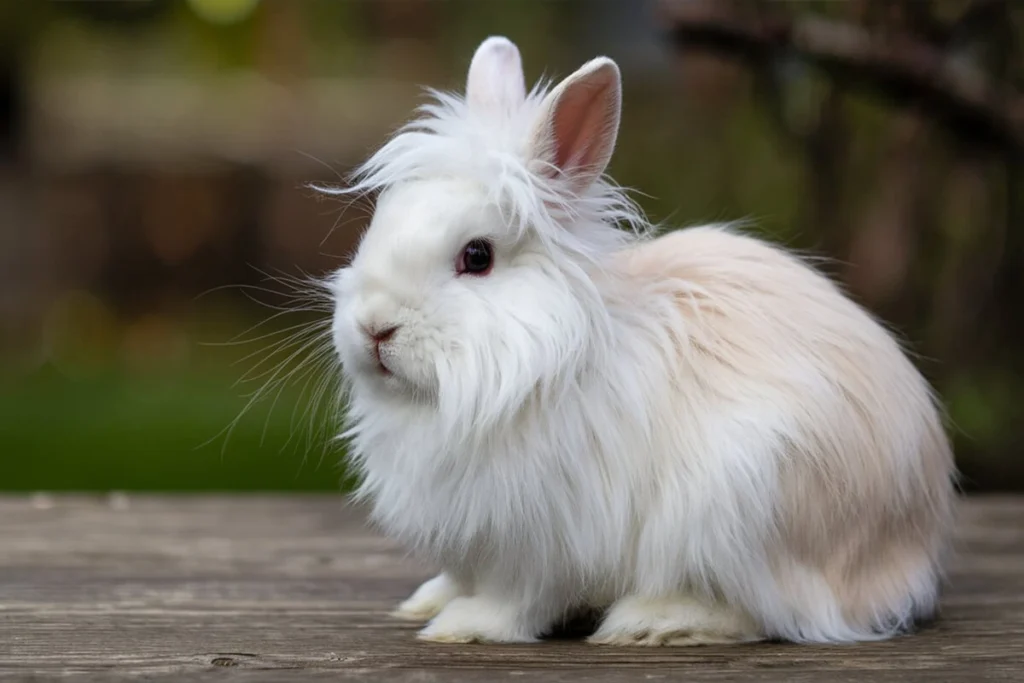
These factors all contribute to why English Angora Rabbit Price continues to increase. As reputable breeders maintain high standards, breeding challenges limit supply, and sourcing costs add extra expenses, the market price remains high for those seeking these rare and valuable rabbits.
Conclusion
English Angora Rabbit Price continues to rise as demand for these unique rabbits increases. Whether people seek them as pets, show animals, or wool producers, the factors influencing their cost remain significant. Their luxurious wool, high grooming and veterinary expenses, and specialized dietary needs make them one of the more expensive rabbit breeds to own.
Reputable breeders also play a crucial role in determining English Angora Rabbit Price. Ethical breeding practices, selective genetic pairings, and limited litter sizes contribute to higher costs. Since quality English Angora rabbits require careful breeding to maintain their wool texture, health, and temperament, buyers must pay a premium for rabbits with strong pedigrees. As more people seek responsibly bred rabbits, prices continue to climb.
Beyond breeding and care, market trends also affect English Angora Rabbit Price. The demand for Angora wool in the textile industry, combined with rising pet ownership interest, pushes prices higher. Adoption and sourcing costs add another layer of expense, especially when buyers must travel to find a reputable breeder. With increasing interest in rare rabbit breeds, English Angoras remain a sought-after choice, further driving up their market value.
For anyone considering owning an English Angora rabbit, understanding these price factors is essential. The initial purchase price reflects not only the rarity of the breed but also the long-term costs of feeding, grooming, and veterinary care. Investing in a well-bred English Angora ensures a healthy, high-quality rabbit, making the higher price worthwhile. As demand continues to grow, English Angora Rabbit Price is unlikely to decrease, solidifying their status as one of the most valuable pet rabbit breeds available today.
Read More About The English Angora Rabbit Breed from Here
Pick A Nice and Unique Name for your Fluffy Rabbit Friend From Our 100 names Guide
Find Out More about Pets and Different breeds From HERE!
Discover the Best stuff for your Pet On Pet MD Official
